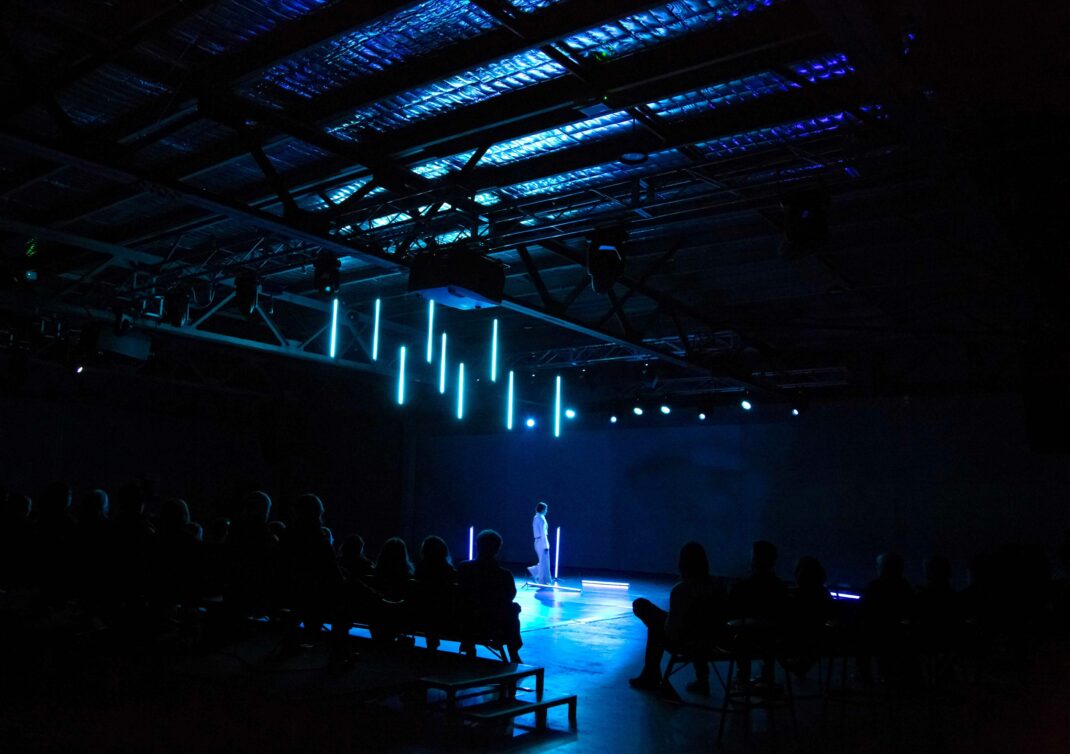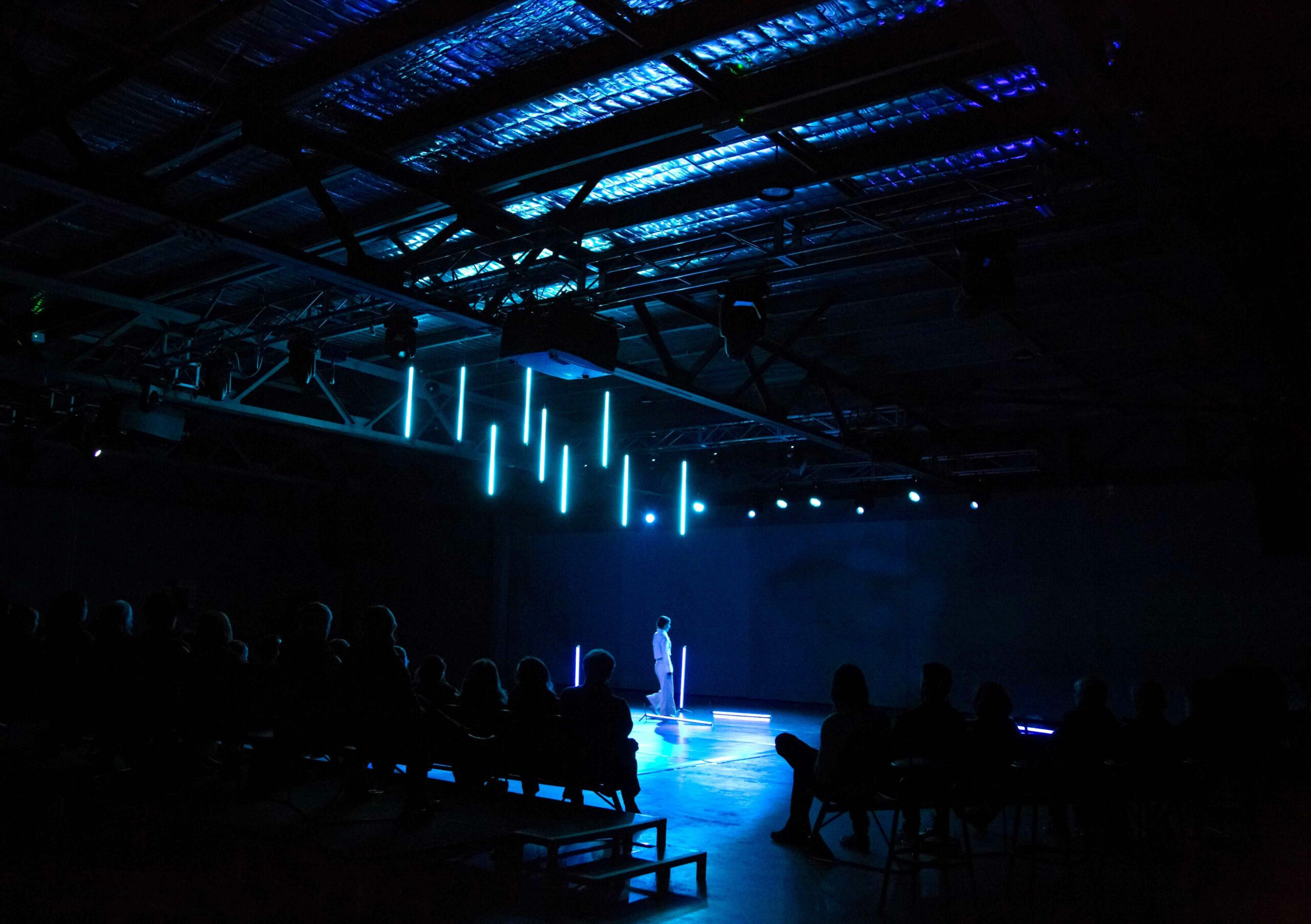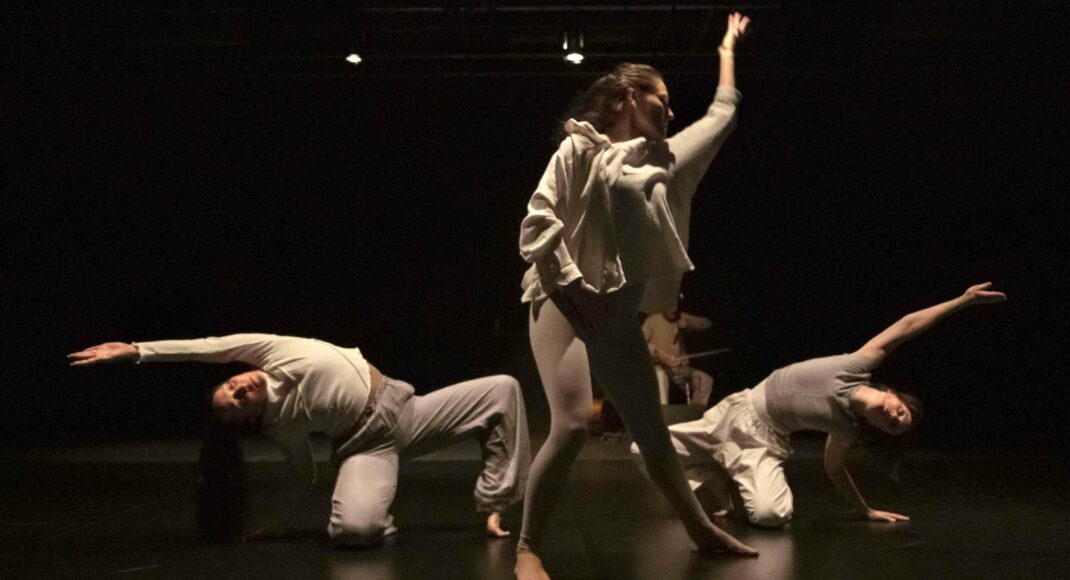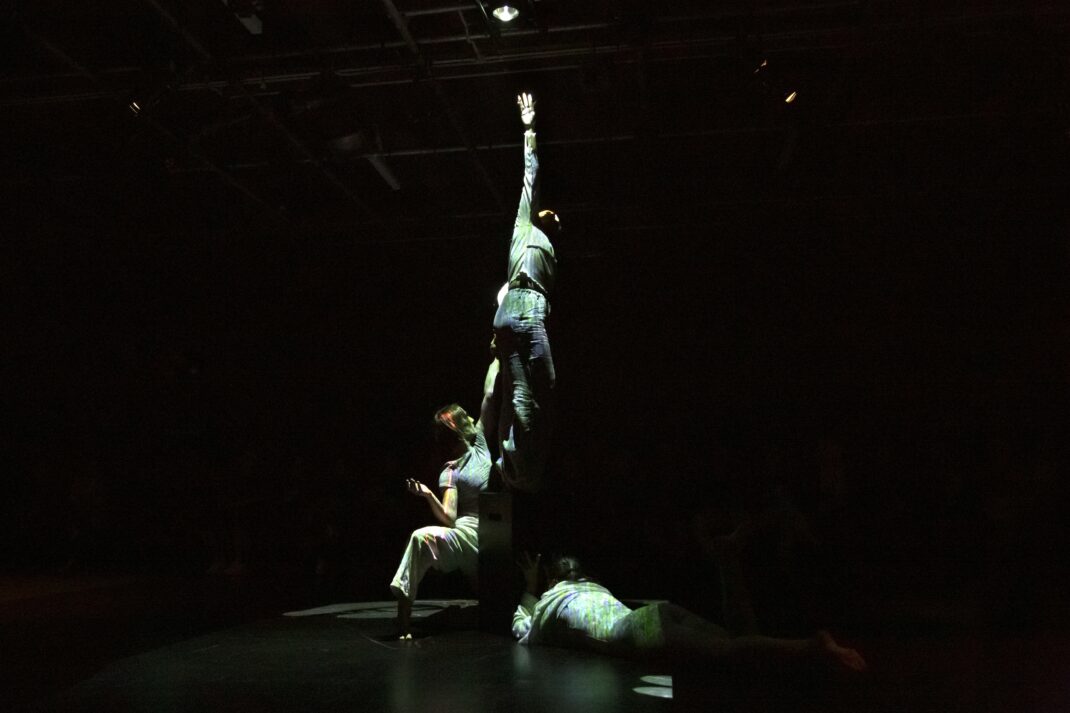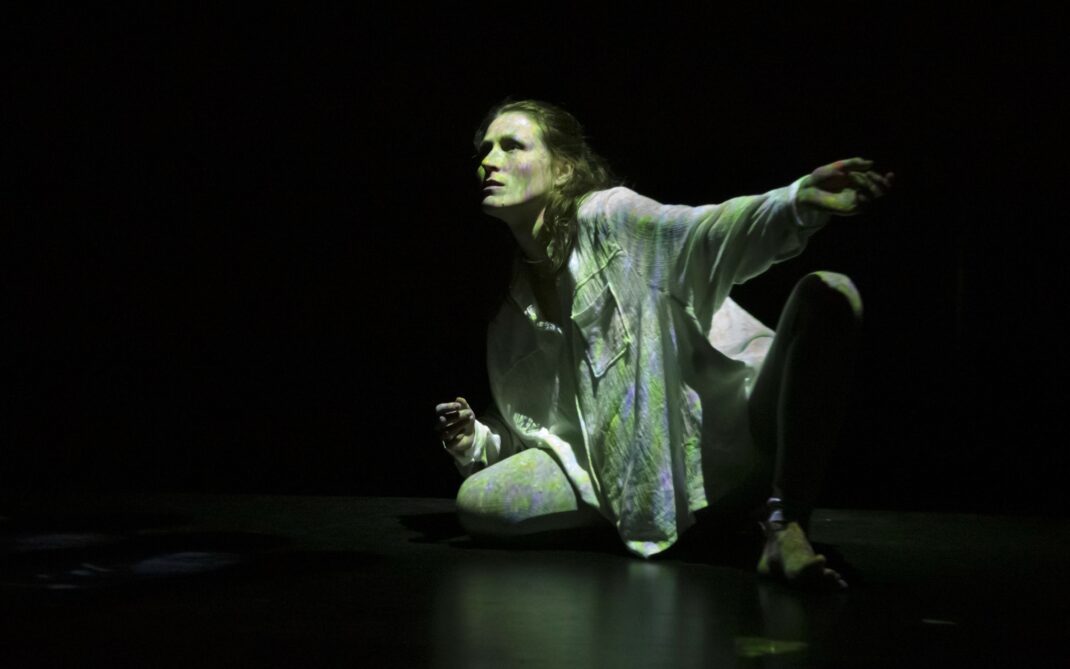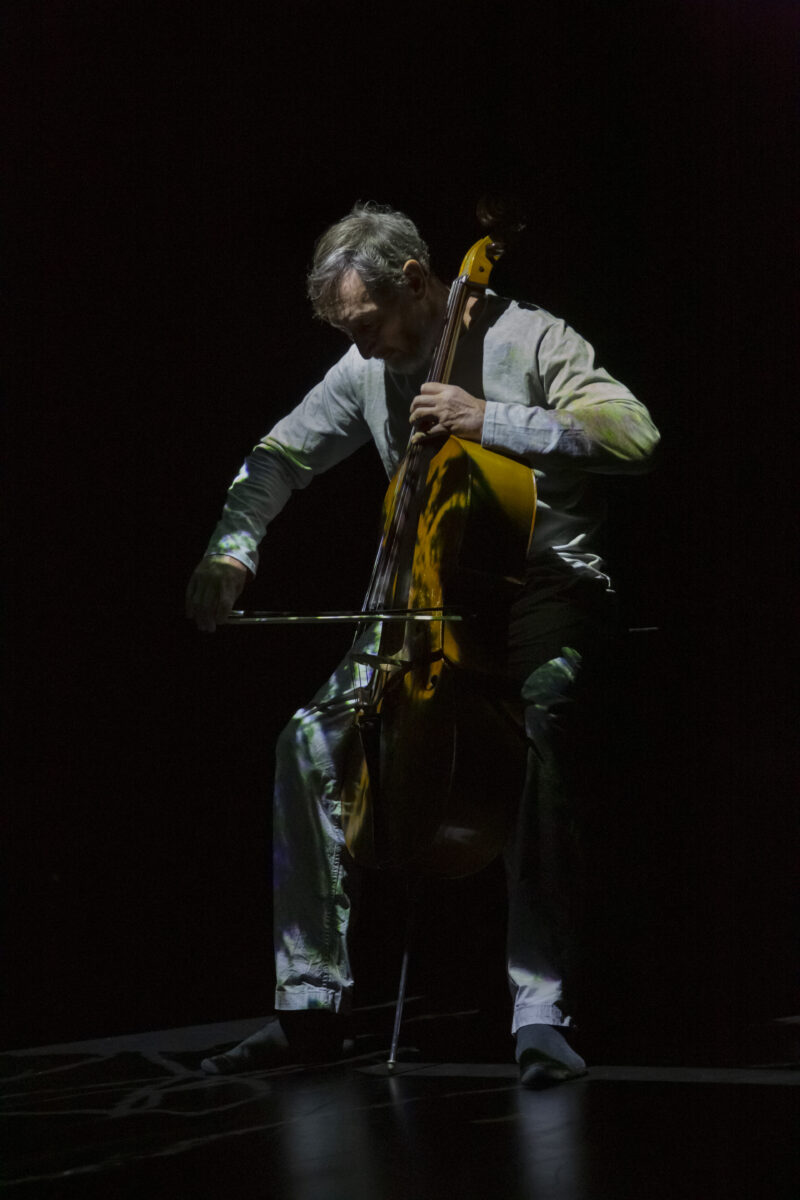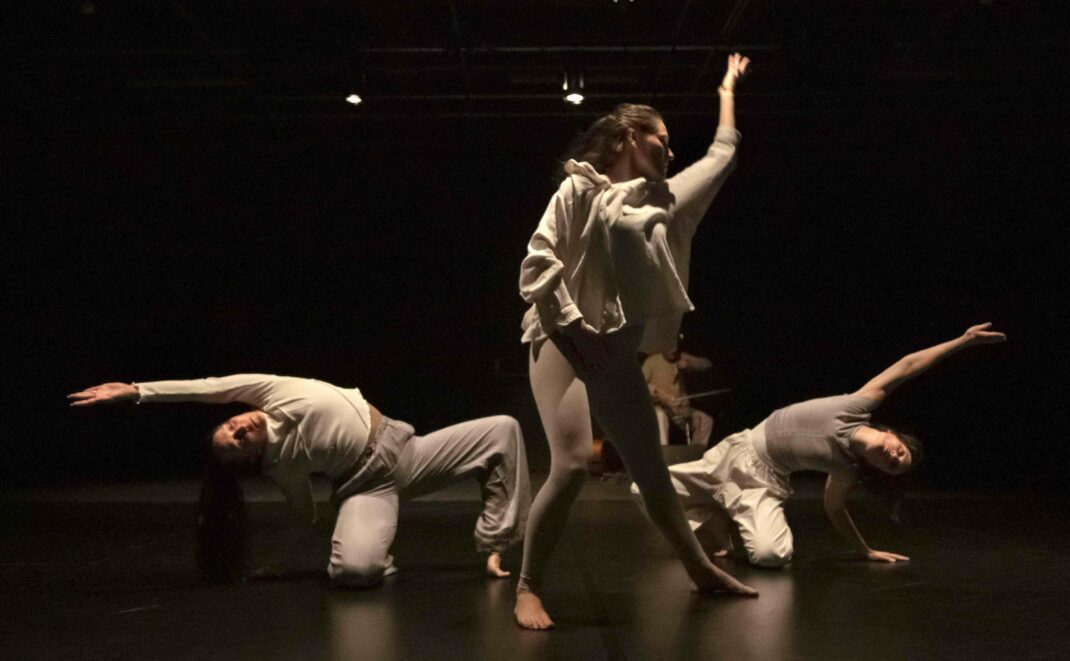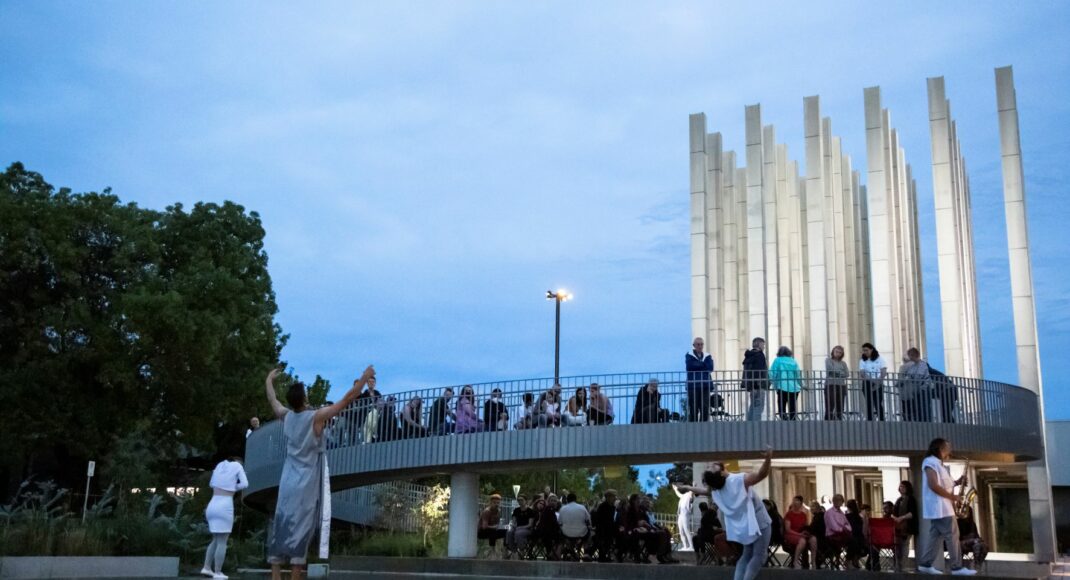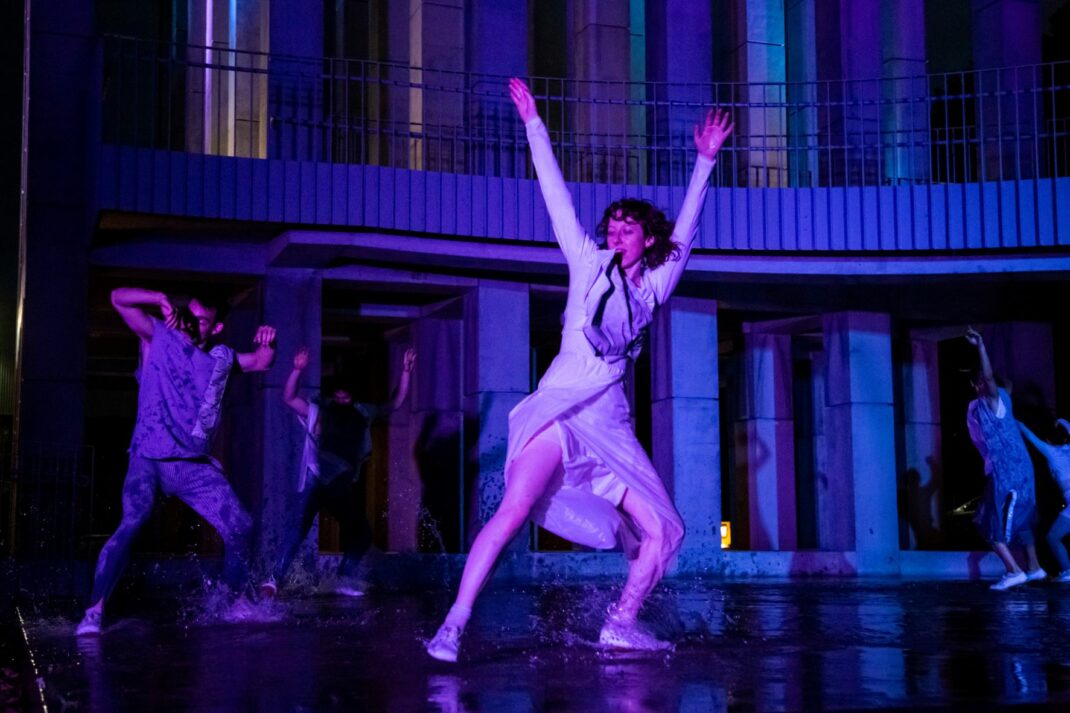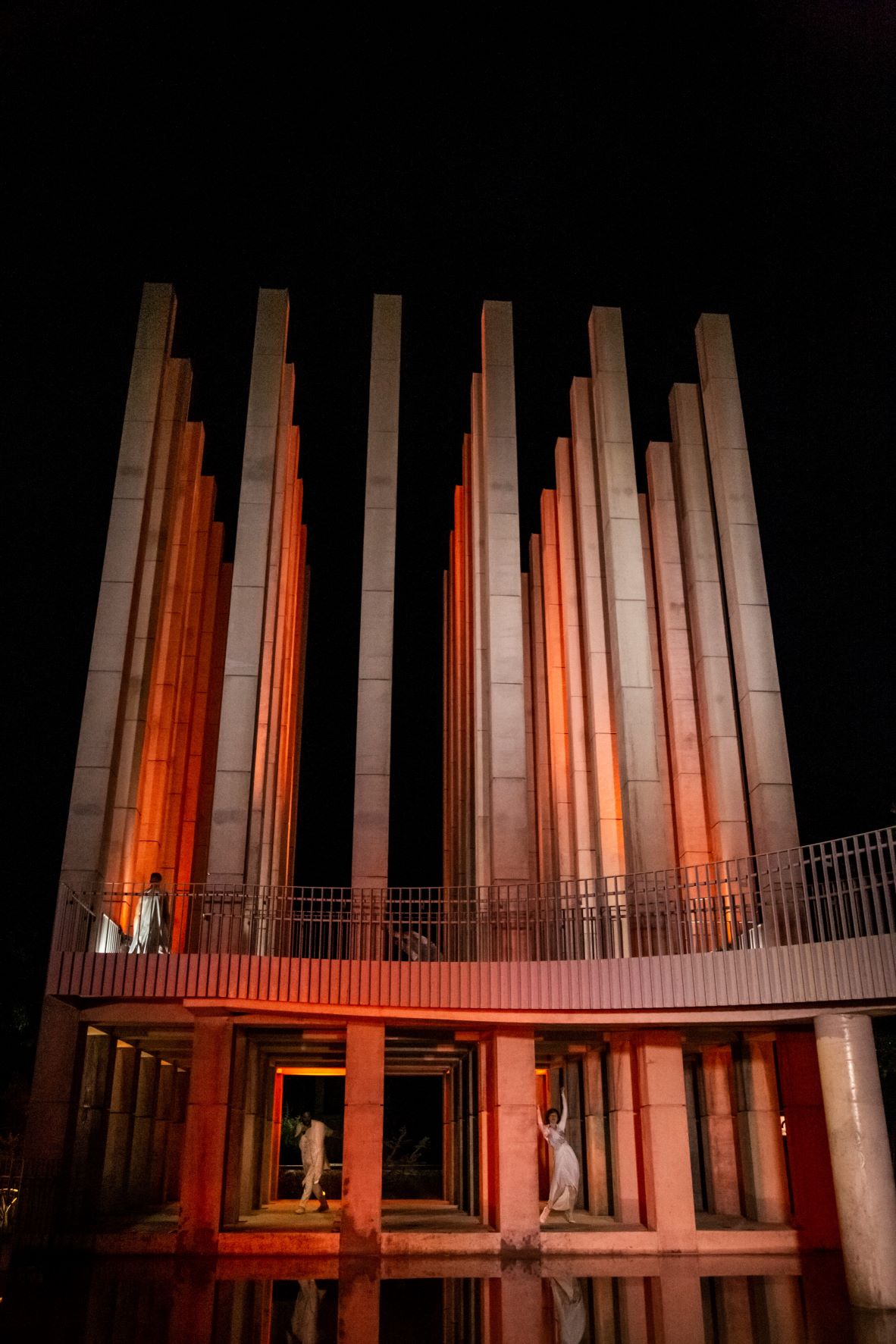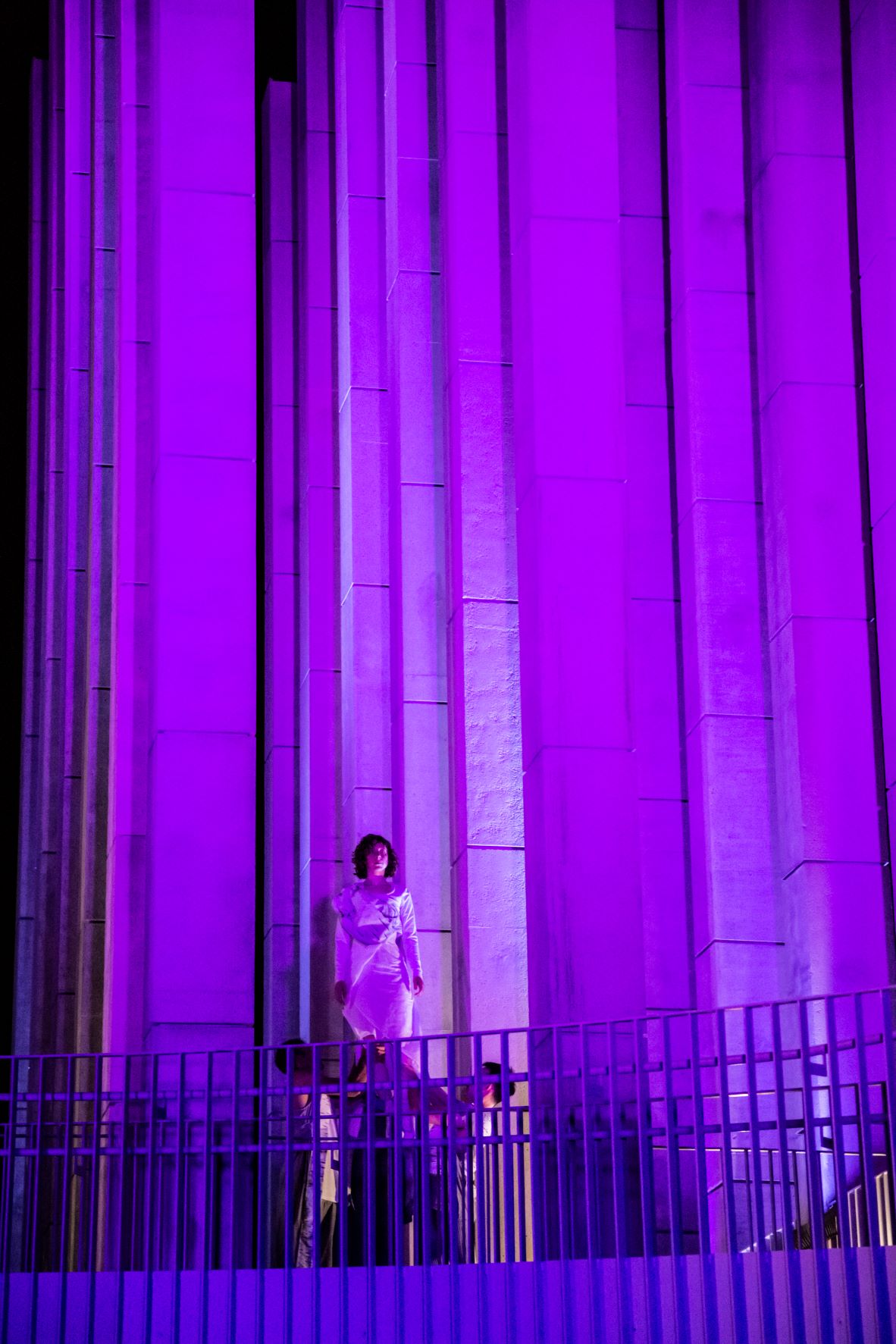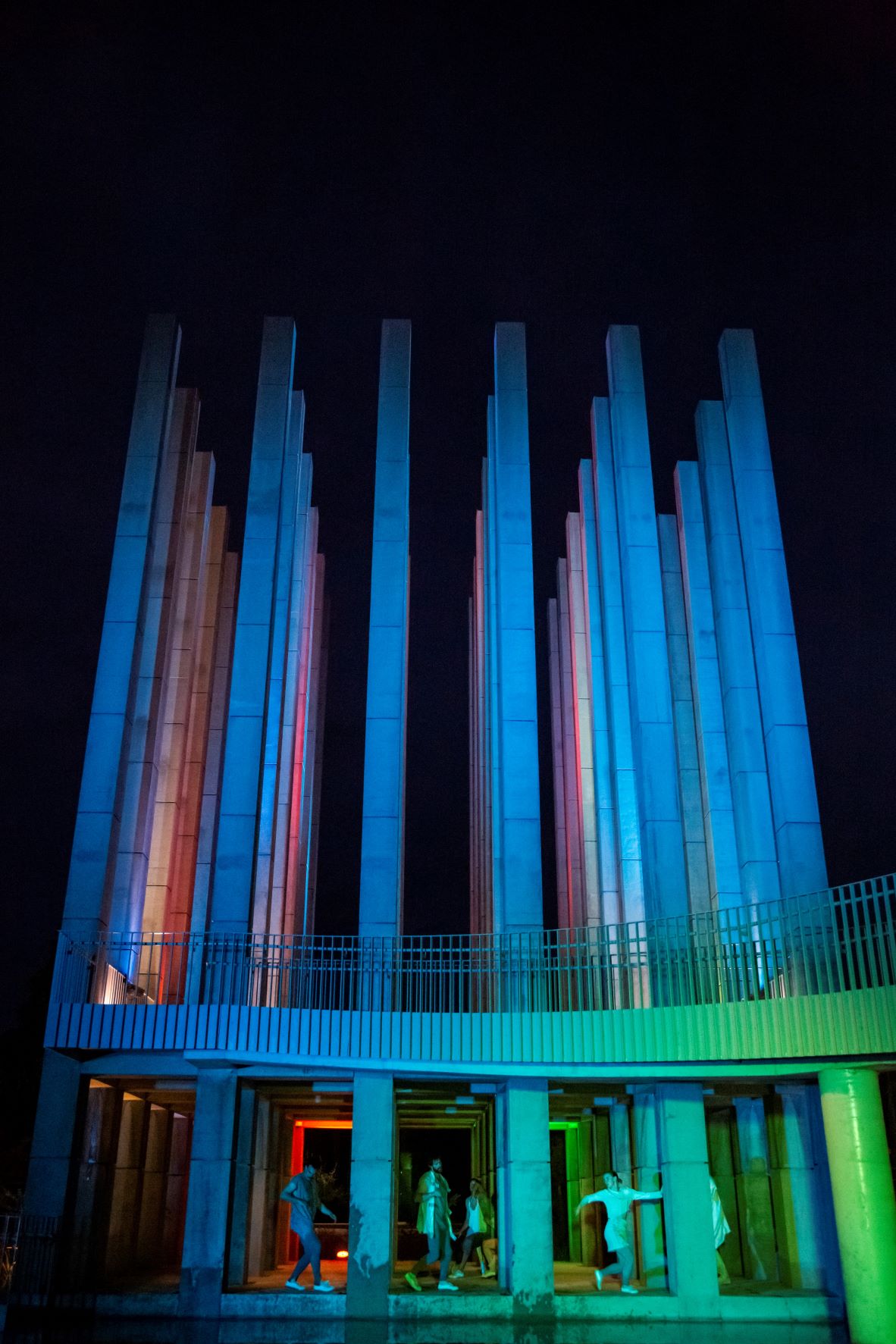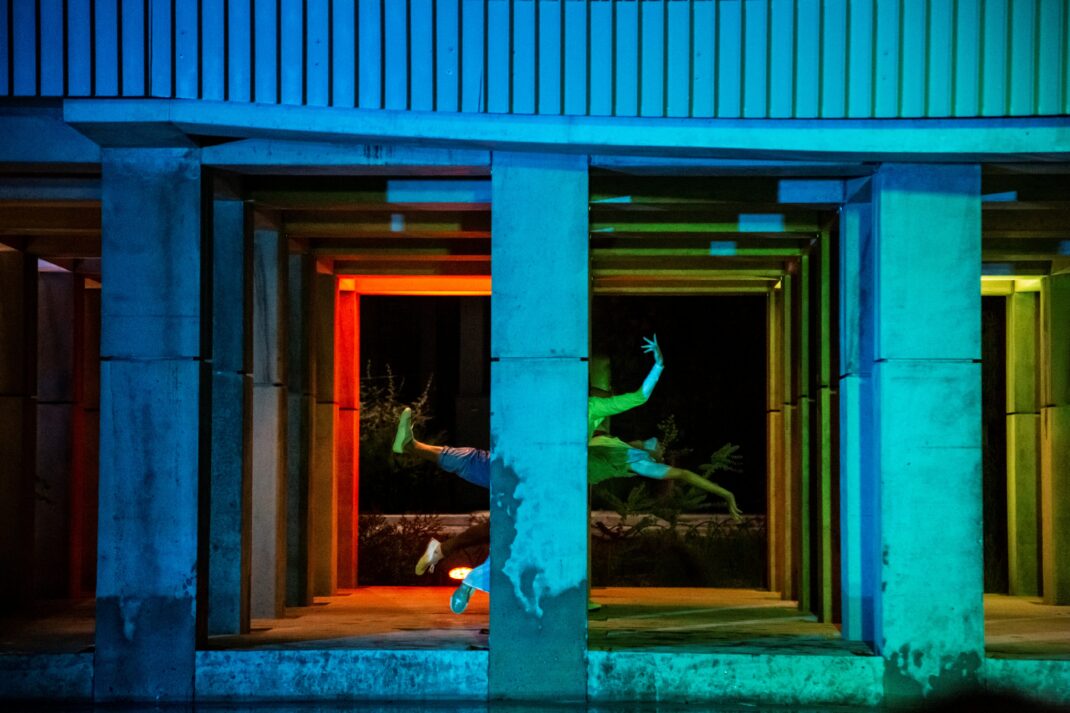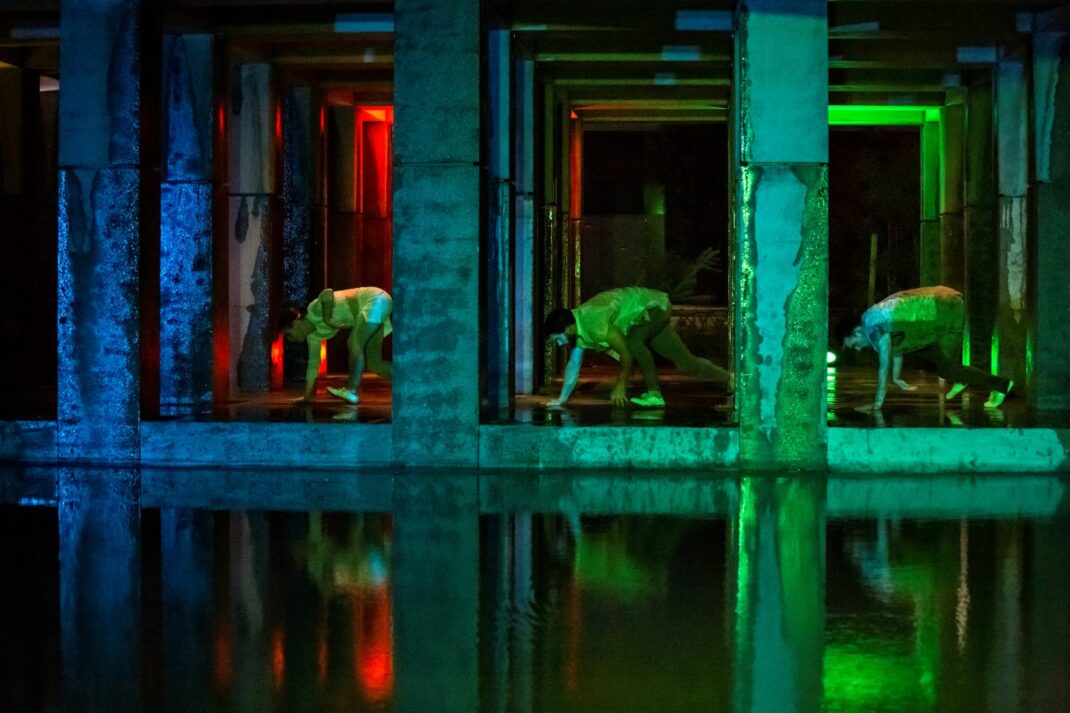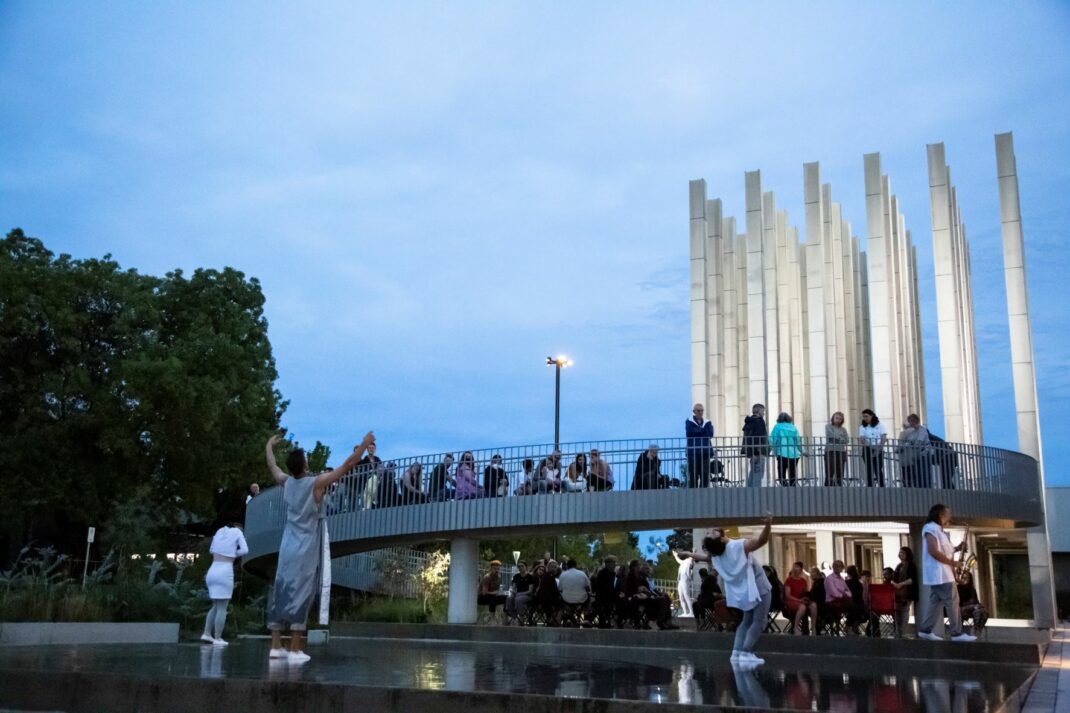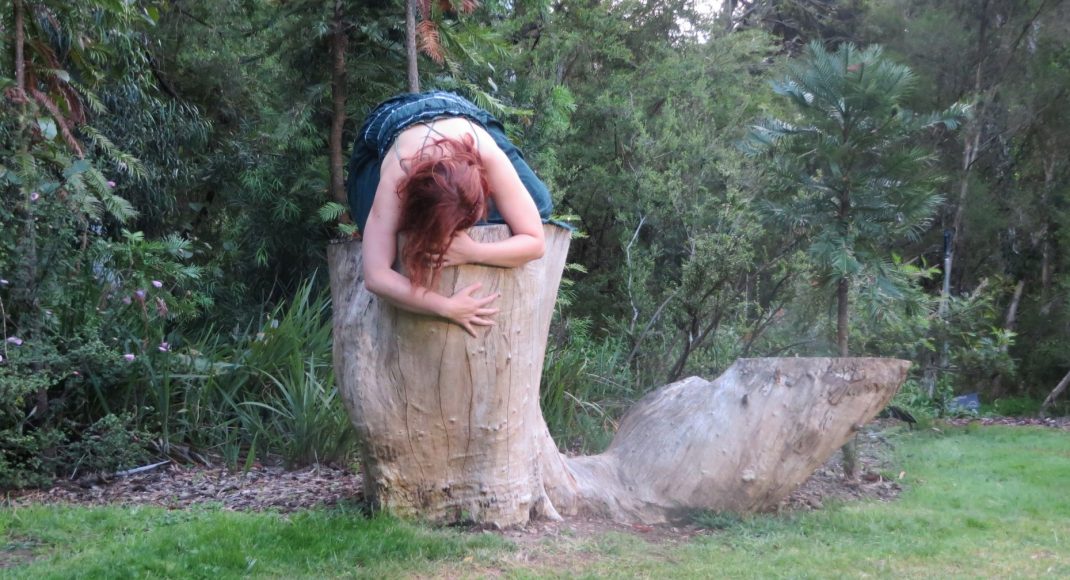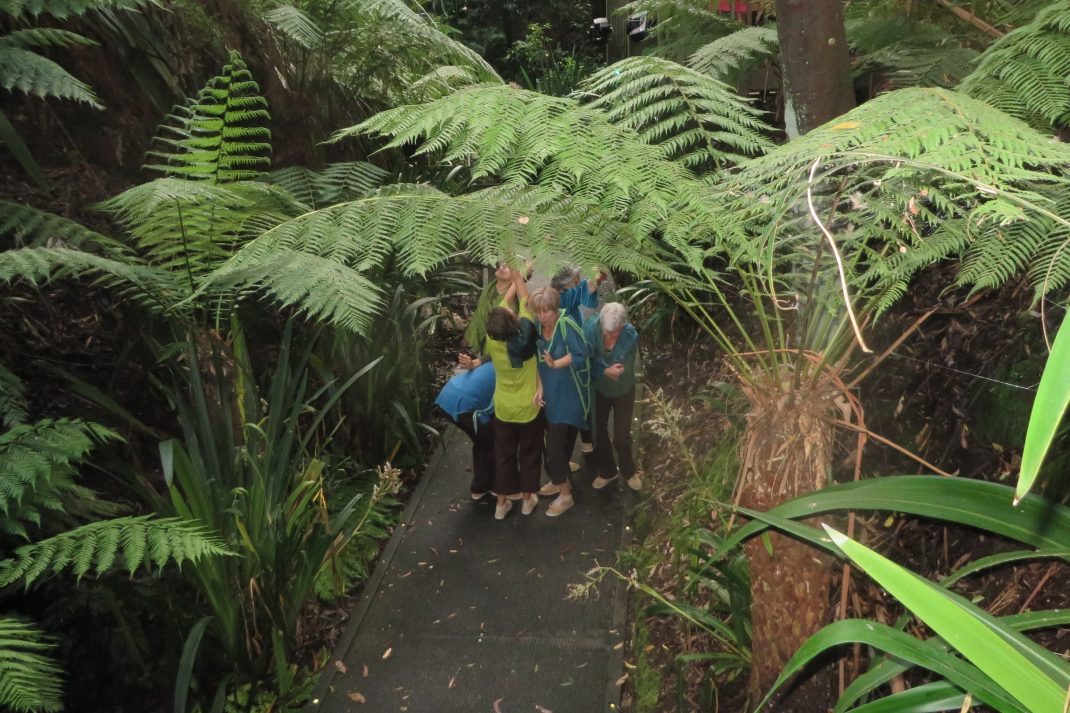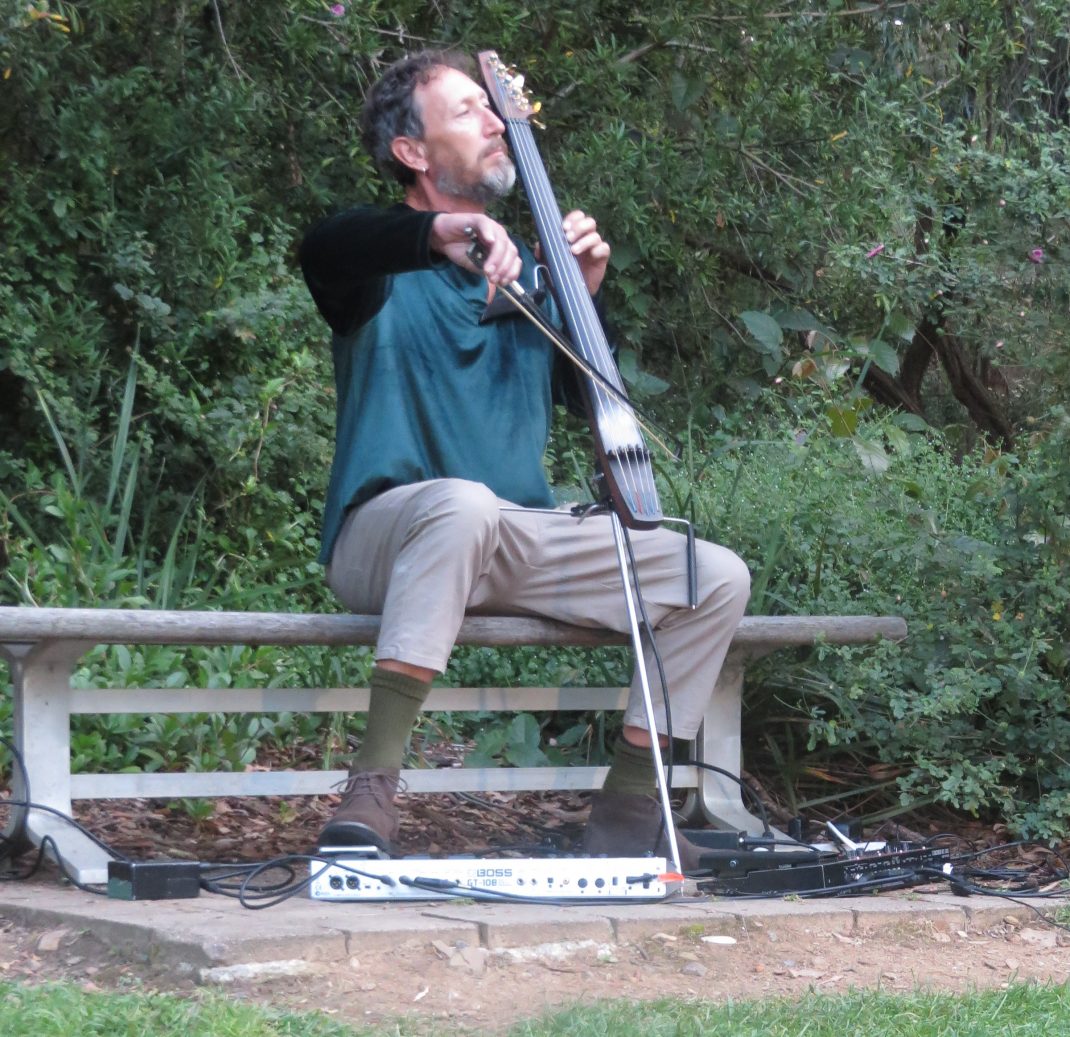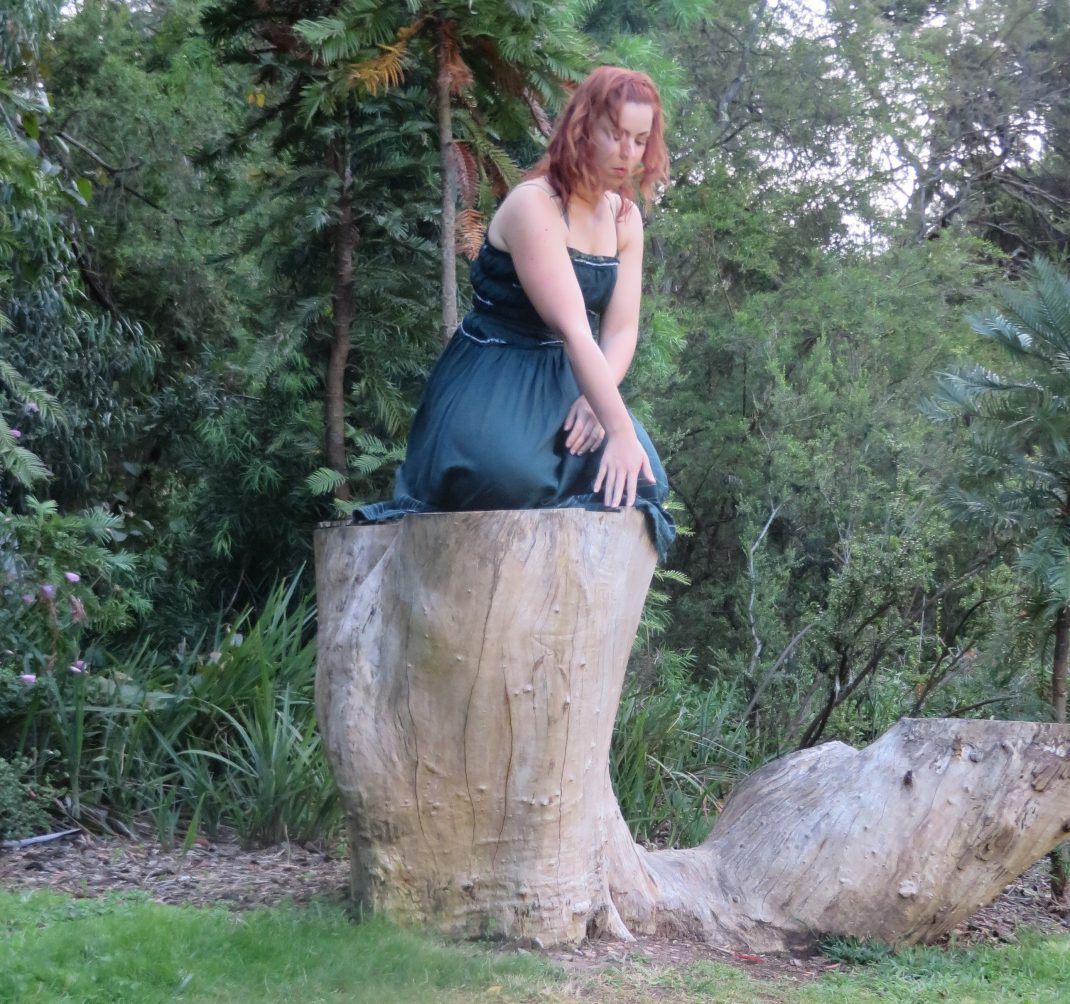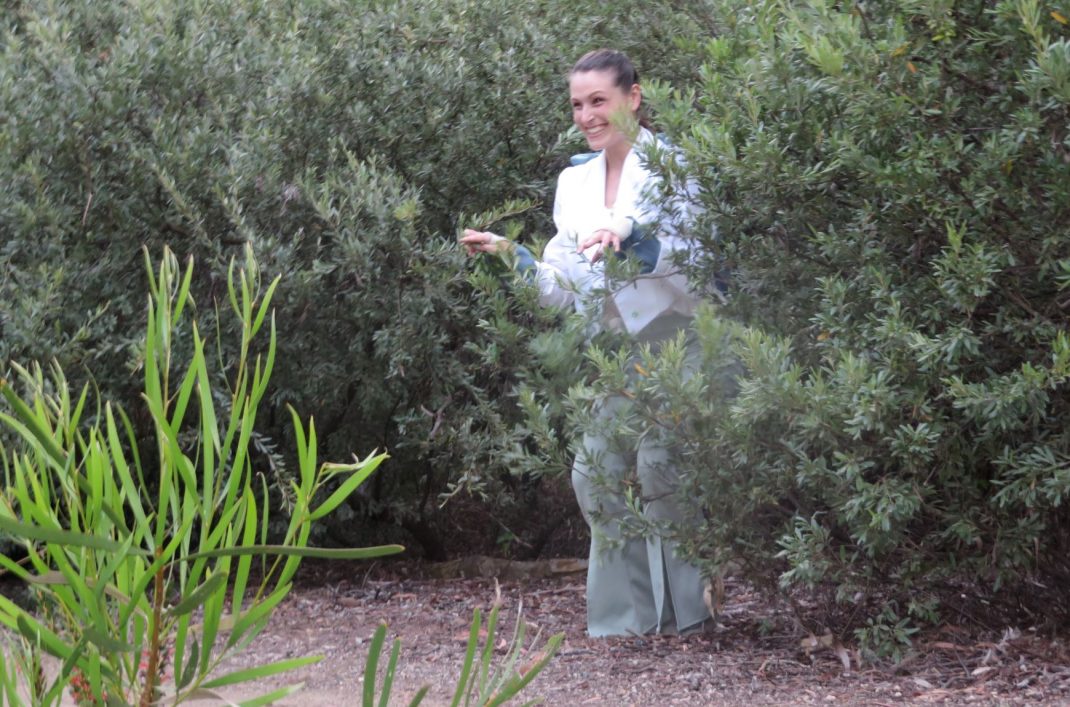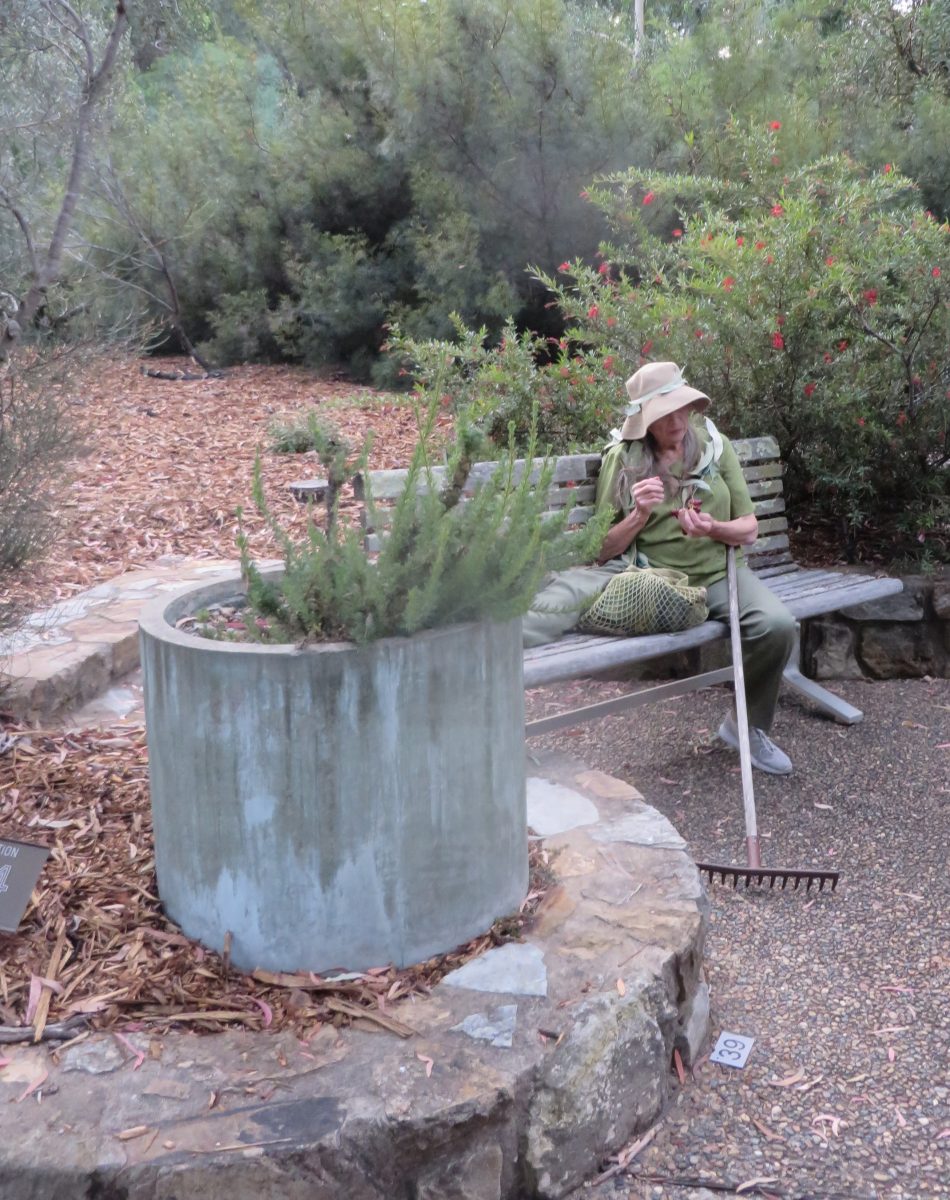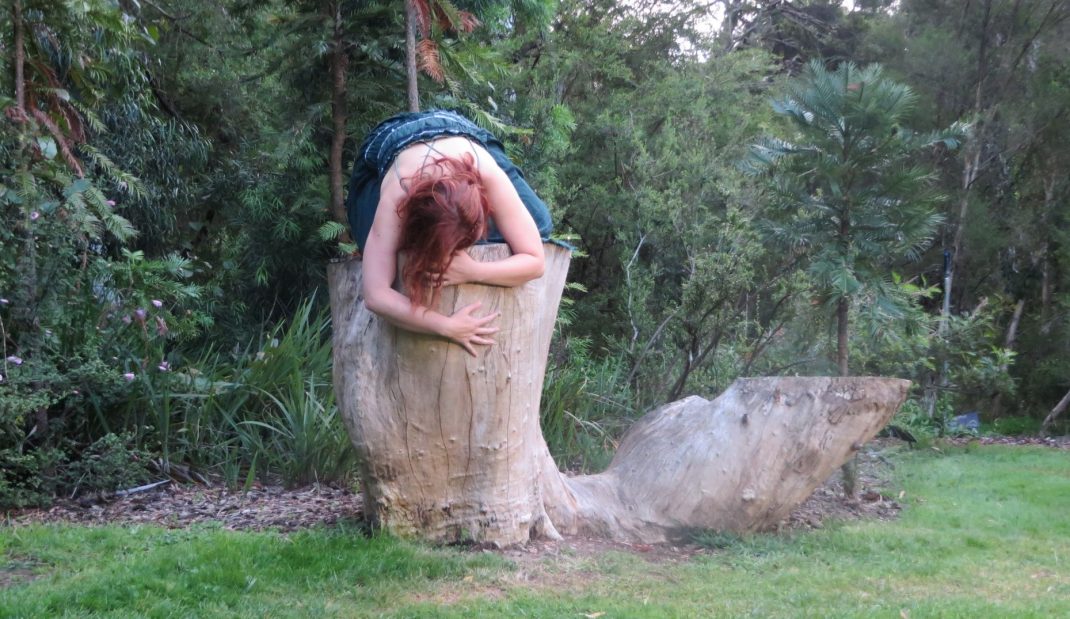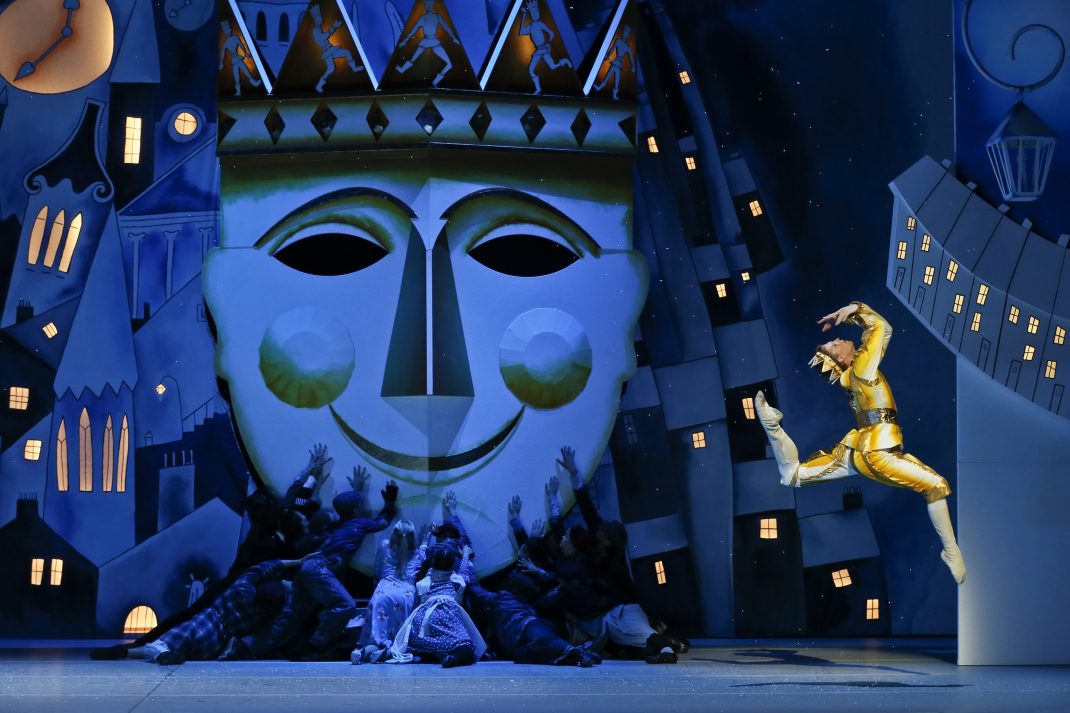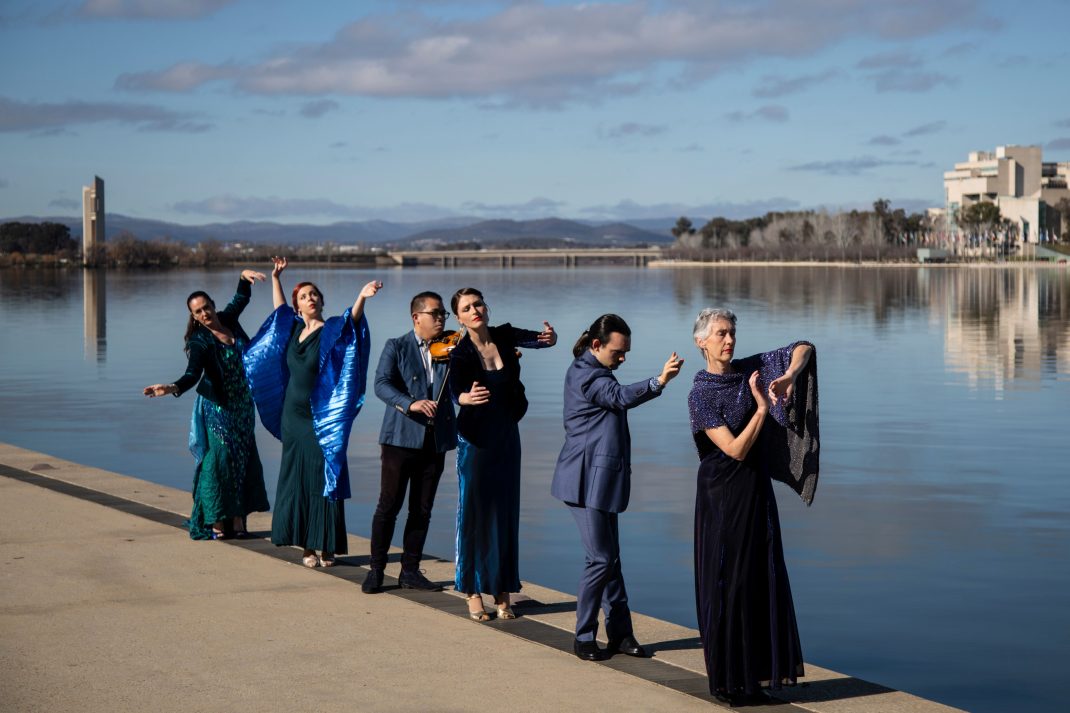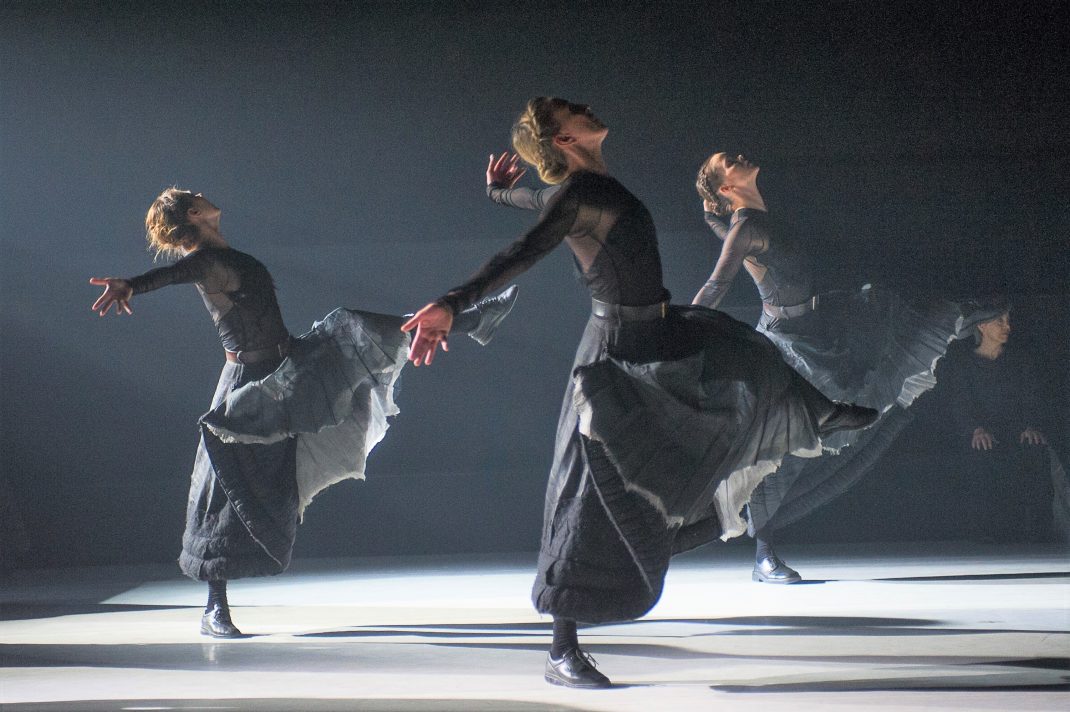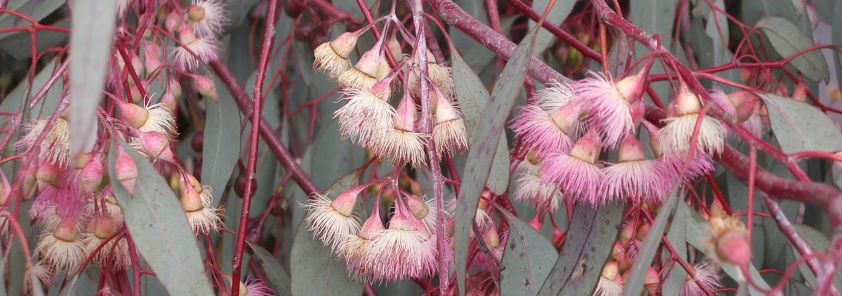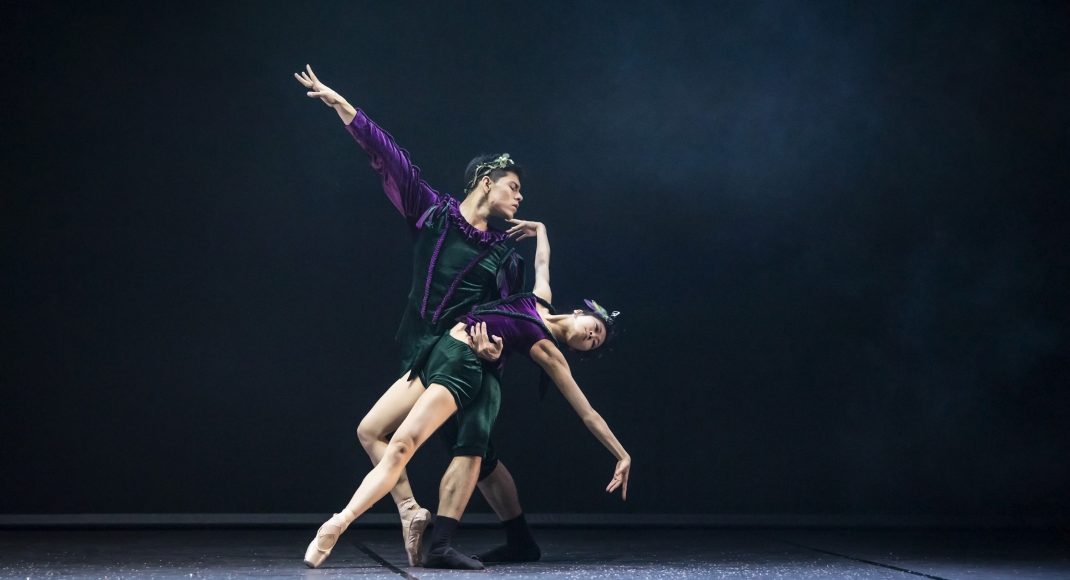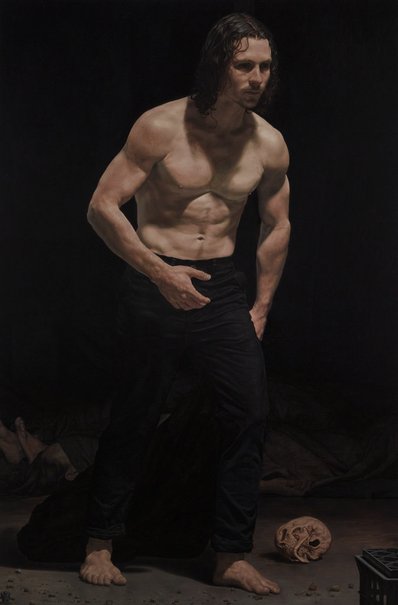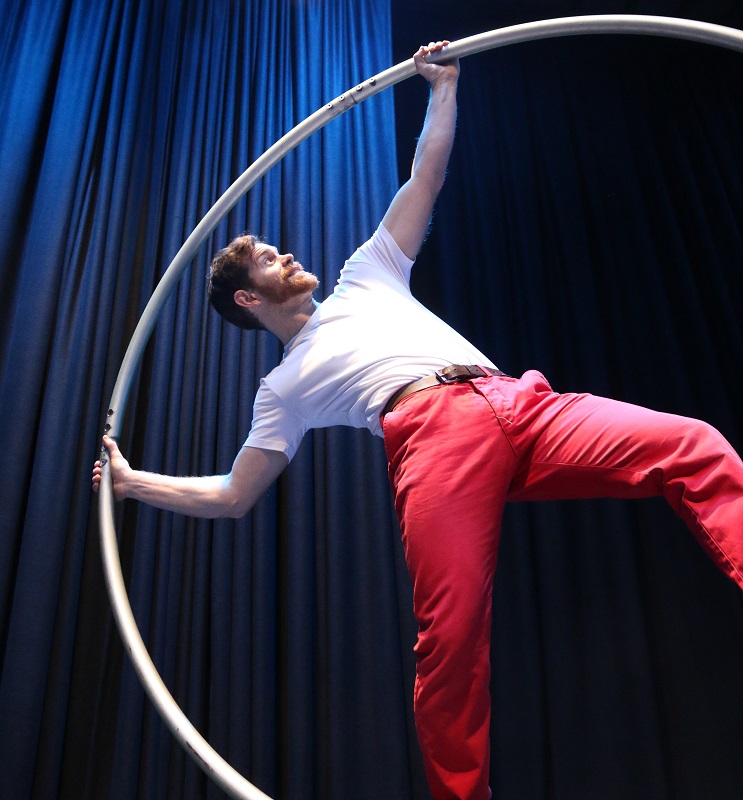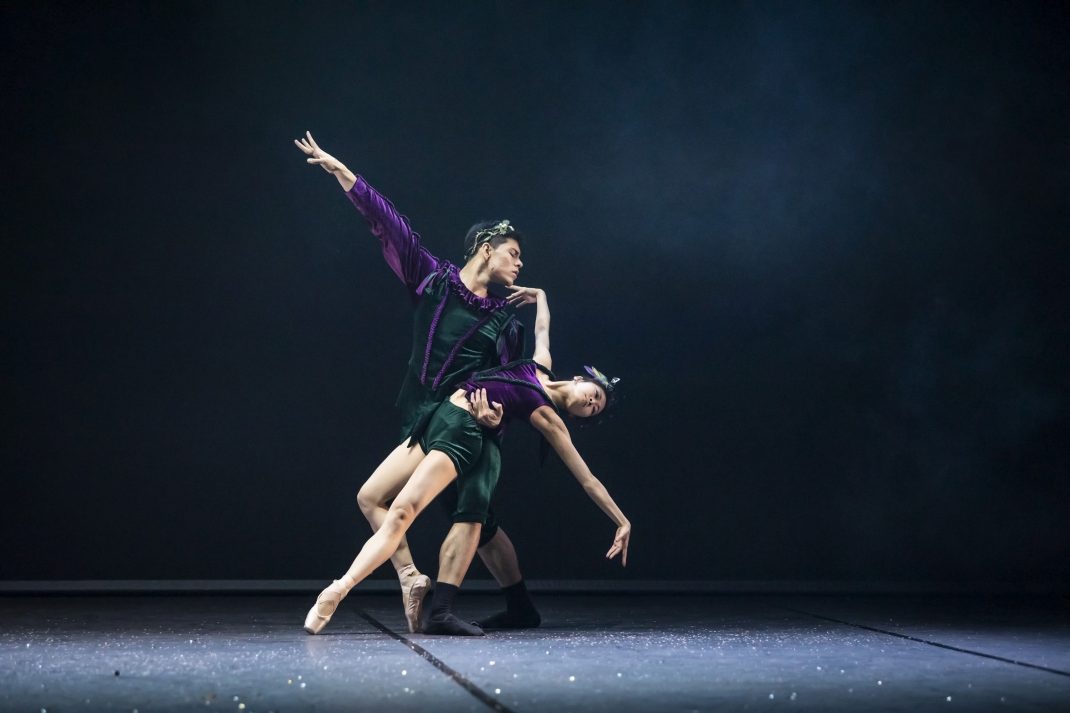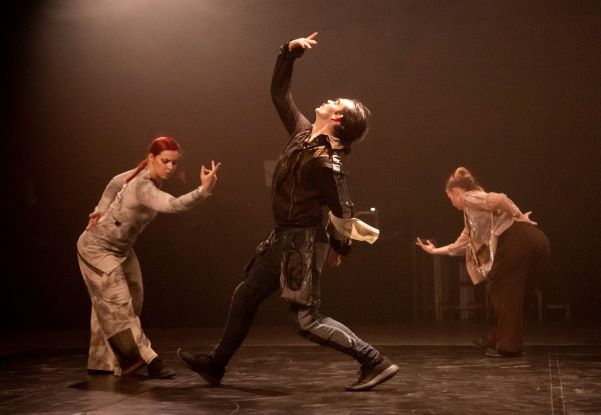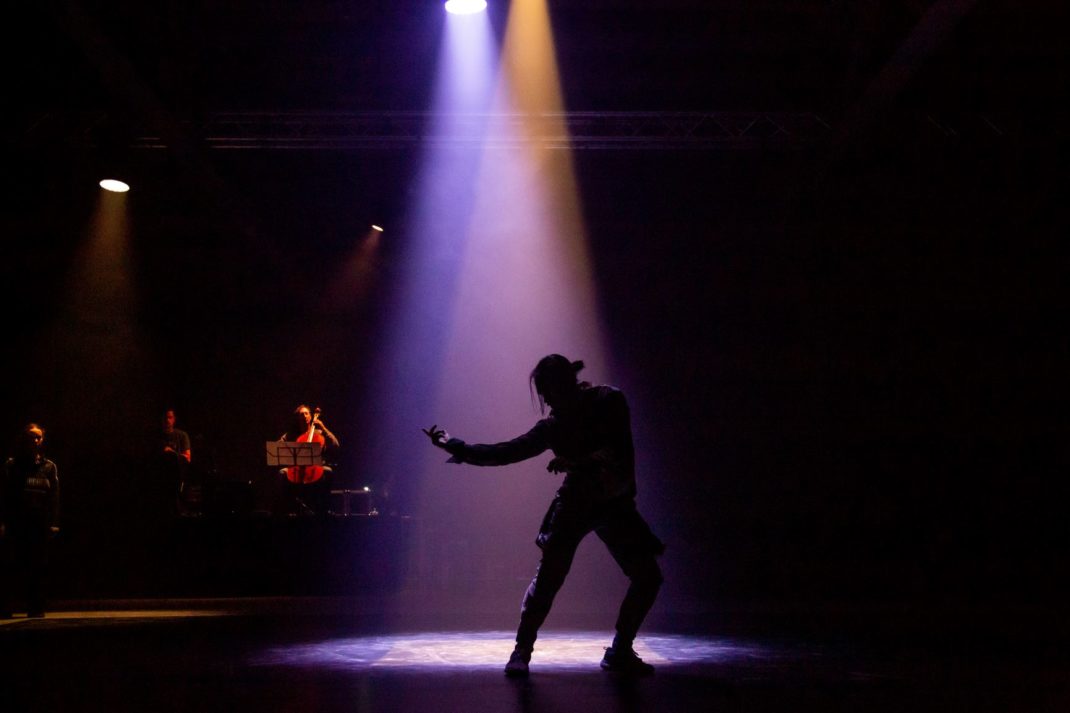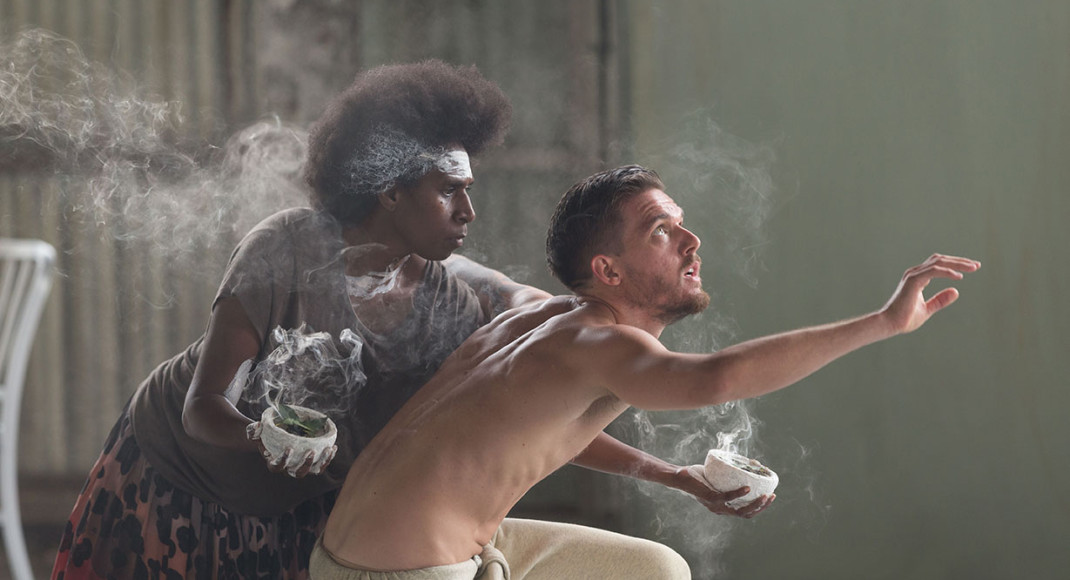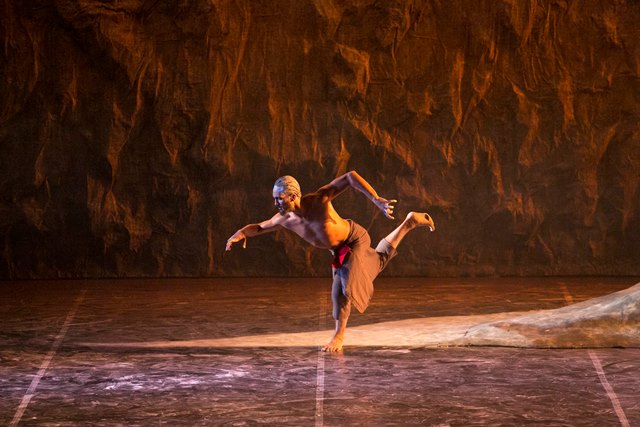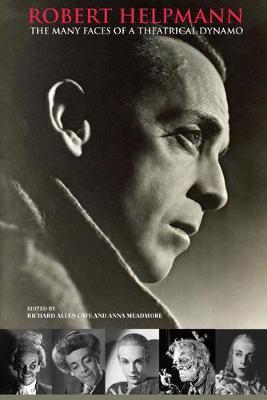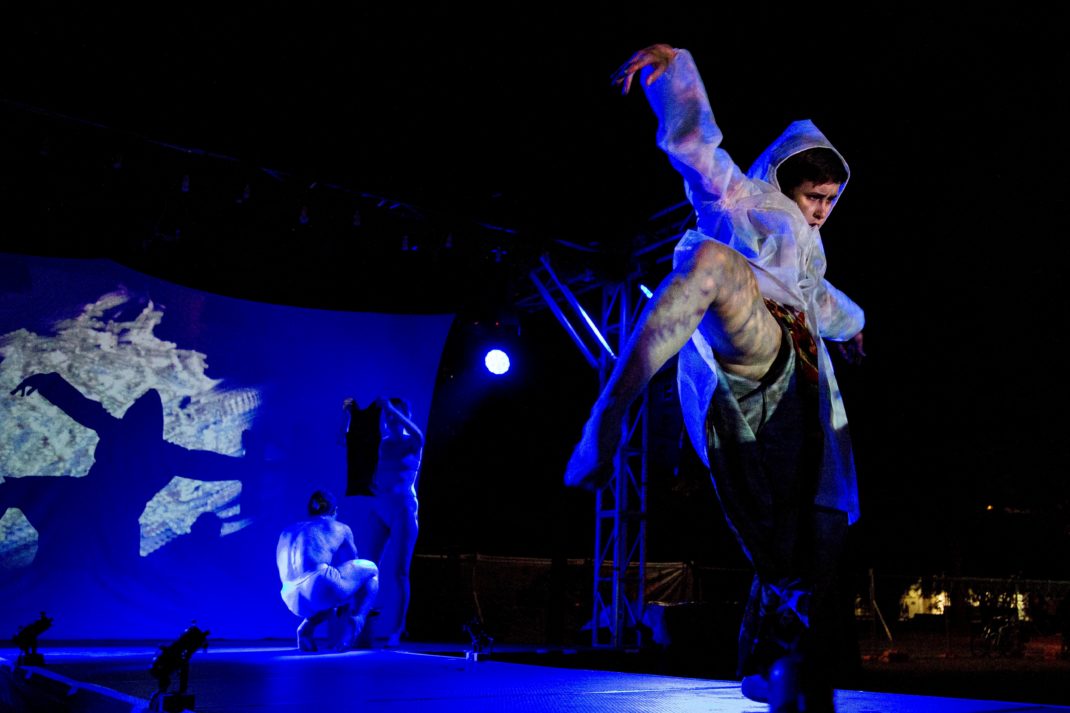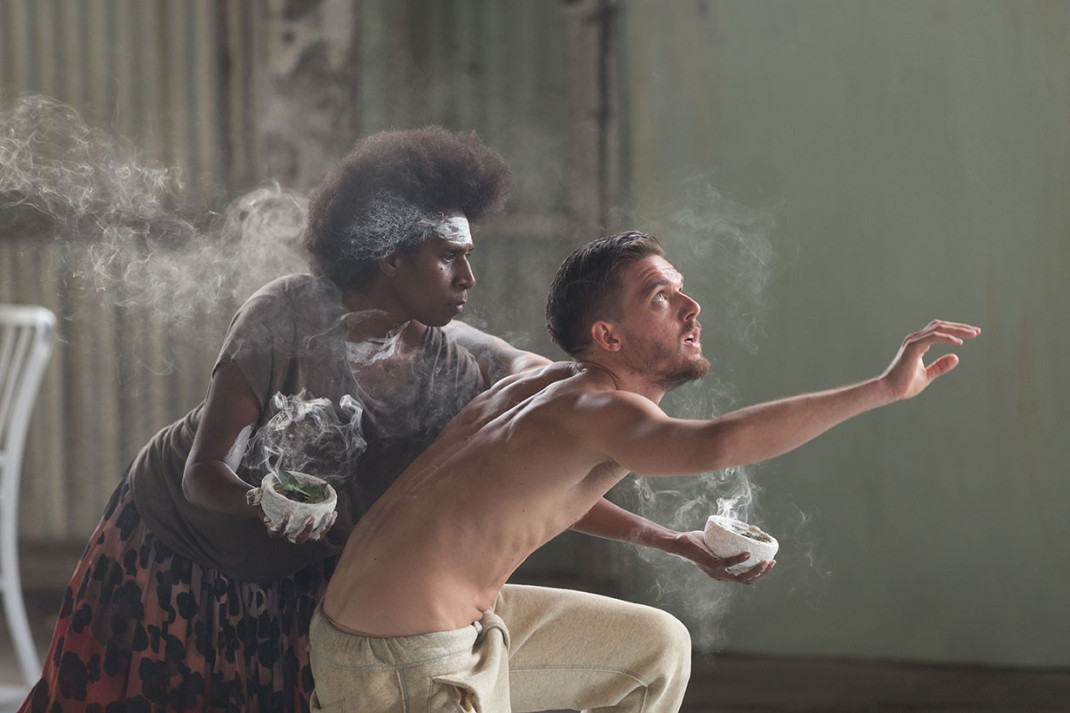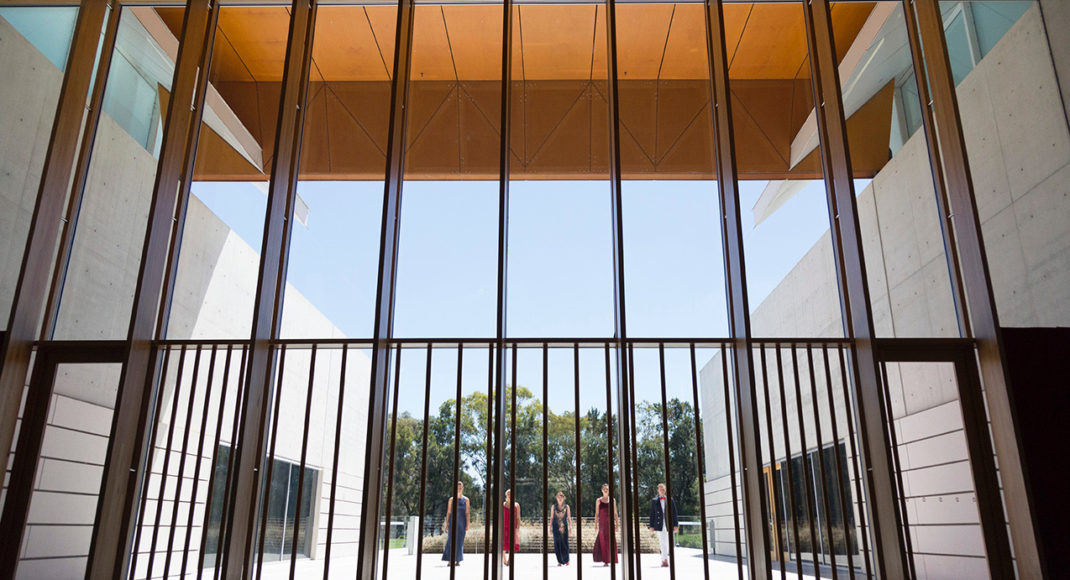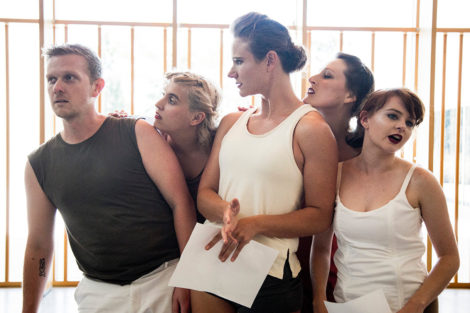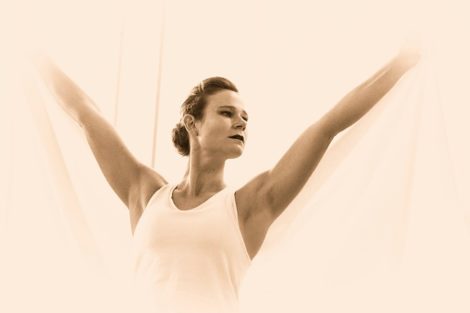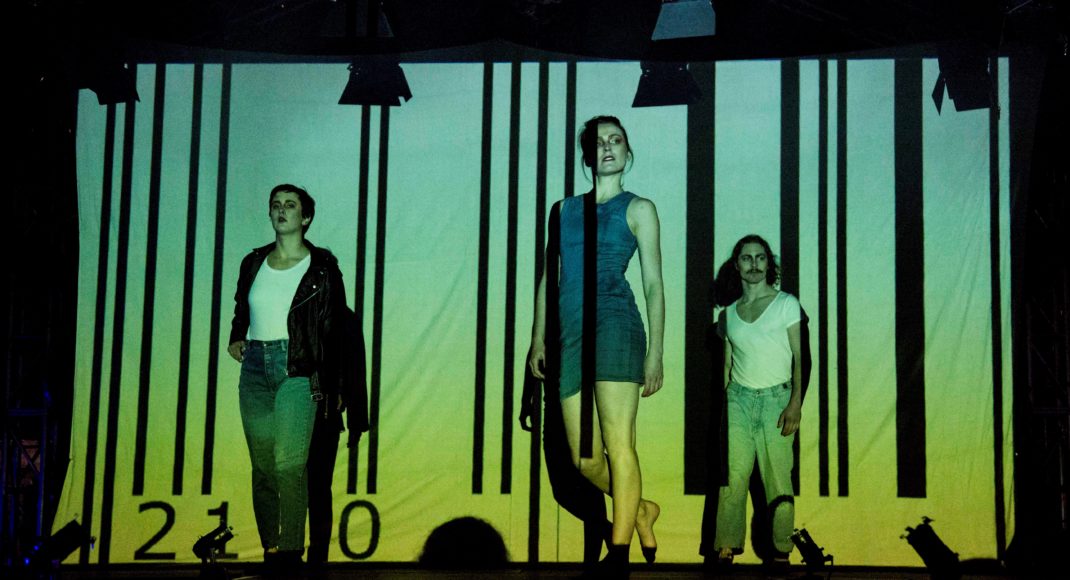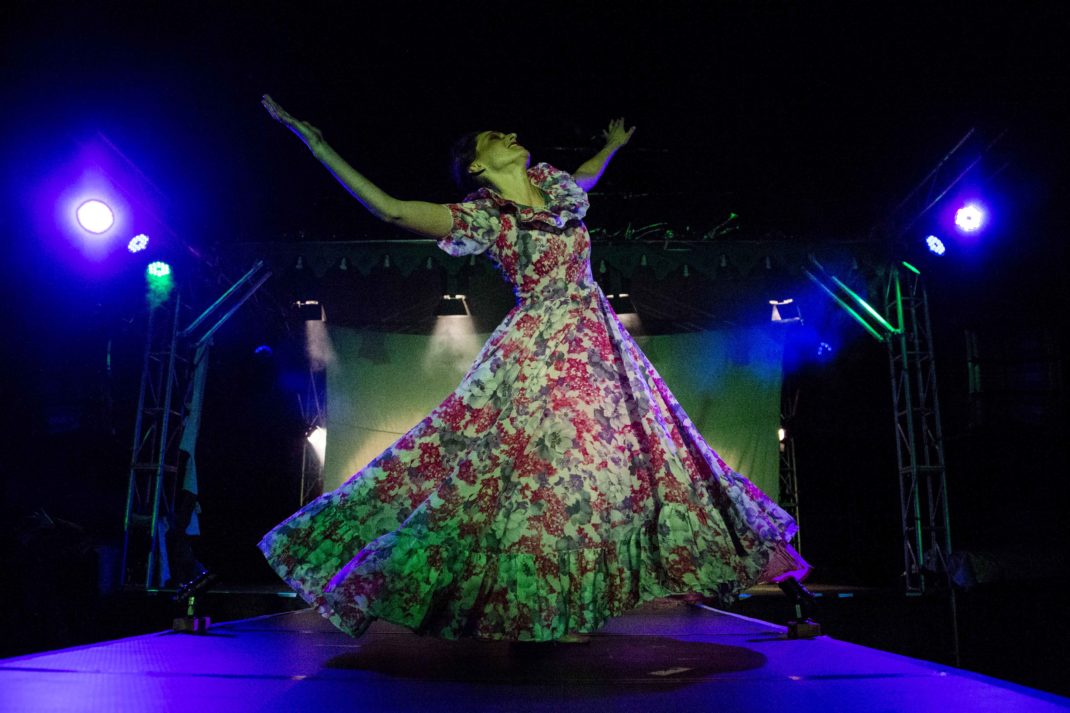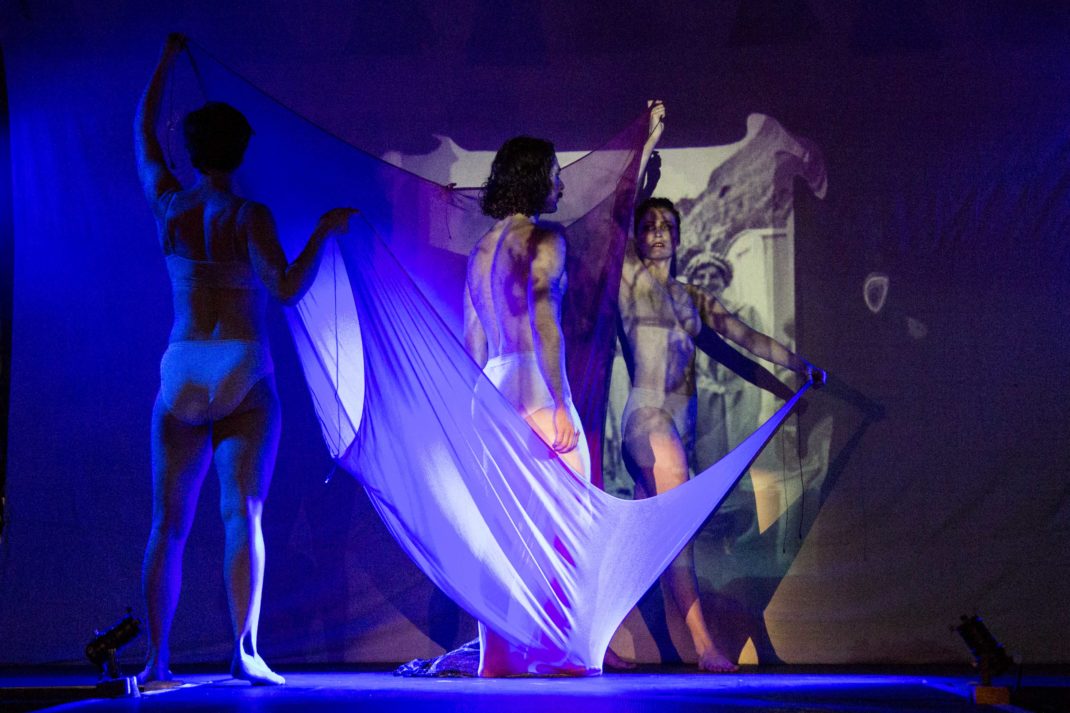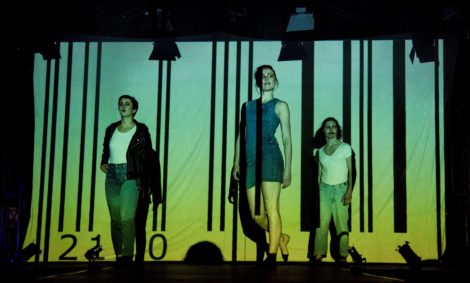27 June 2024. The Vault, Dairy Road Precinct, Canberra
The Dataset took place in the Vault, an expansive, untheatrical space in the Dairy Road Precinct in Fyshwick, a largely industrial area in Canberra. The Vault has been used effectively before by Alison Plevey’s Australian Dance Party, in particular with From the Vault in 2019. But it needs an exceptional production to ensure that the characteristics of the space, especially its dark and unwelcoming environment, are used to advantage. The Dataset was unappealingly dark at the beginning, although it brightened up somewhat, at least in terms of lighting, as the work progressed.

Indeed as the work progressed, the two dancers who formed the cast, Alison Plevey and Sara Black, who were wearing identical white outfits, were subjected to examination by a program in which every conceivable aspect of the dancers’ bodily and emotional characteristics were measured by what appeared to be an artificial intelligence program. We could see the program unfolding in words on the large back-screen in the performing space. Those words were also spoken aloud by an American voice. We watched as the dancers attempted to address the suggestions the AI program offered them.
Eventually, presumably because the AI program suggested that friendship was the next step, the dancers removed their short white jackets, under which they were wearing an individually distinct, decorative black and white top. They danced together with choreography that (perhaps unsurprisingly) was very much in the style we have come to expect from Australian Dance Party—lots of floor work, lifts with stretched limbs emerging out of the shapes formed, along with a variety of twisted poses.

Slowly, however, the data on the screen began to fall apart, with words breaking up and lurching around. AI was no longer working well. In the end, darkness descended and the dancers made their way around the space using torches as they set up a kind of camp site to which they invited several audience members to join them. The work came to the end in this calm and very different environment.
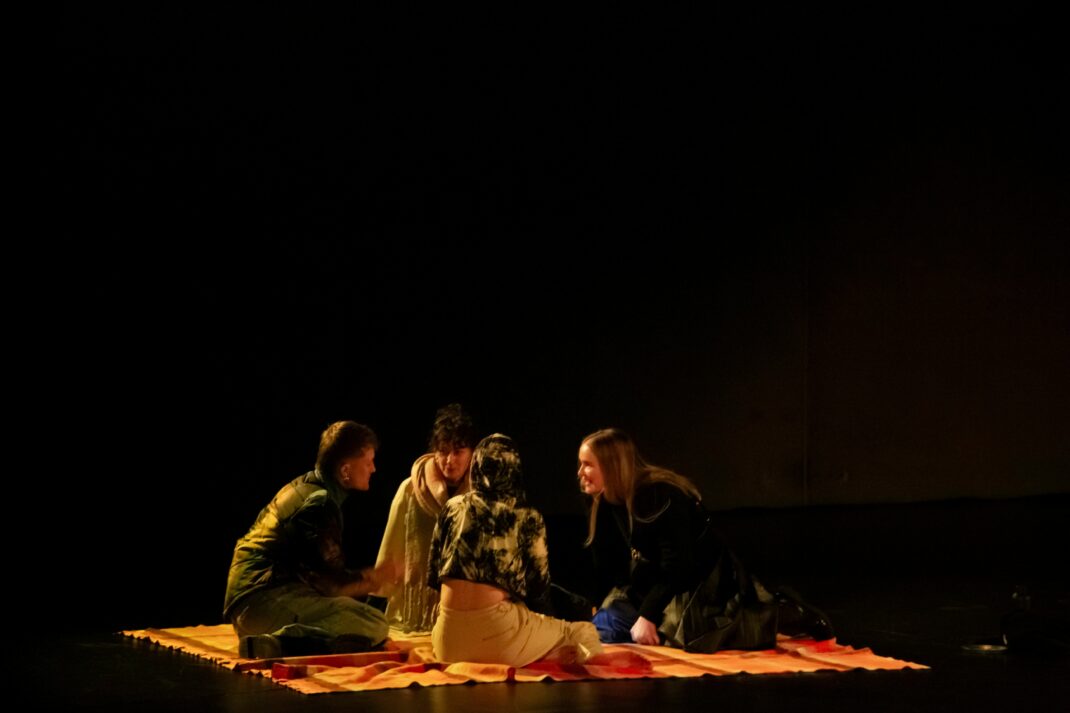
The Dataset falls within the Australian Dance Party’s focus on social and environmental aspects of the world in which we currently exist. Media material from the company explains that the work ‘imagines a world where we physicalise the data that forms us and interrogate its purpose and power. What happens when the system rules us? What happens when the system is broken? The Dataset highlights our adaptability as humans in the face of adversity.’ It is certainly an interesting concept to address and the collaborative elements were at times engrossing and entertaining, especially the ever-changing images that flashed across the back-screen as the dancers were developing their friendship.
But from the beginning of The Dataset my mind kept recalling Aldous Huxley’s Brave New World (published 1932) and George Orwell’’s Nineteen Eighty-Four (published 1949). Both were dystopian novels that examined potential changes in society, and their effects on humanity, by developments in fields such as science, economics and the like. The Dataset had a similar narrative, although I wondered constantly whether dance could address such issues as effectively as the written word. In the case of The Dataset I think the answer is no. In this case the choreography, which is the heart of dance, seemed unnecessary as the work unfolded.
Michelle Potter, 29 June 2024
Featured image: Opening scene from The Dataset. Australian Dance Party, 2024. Photo: © Lorna Sim
